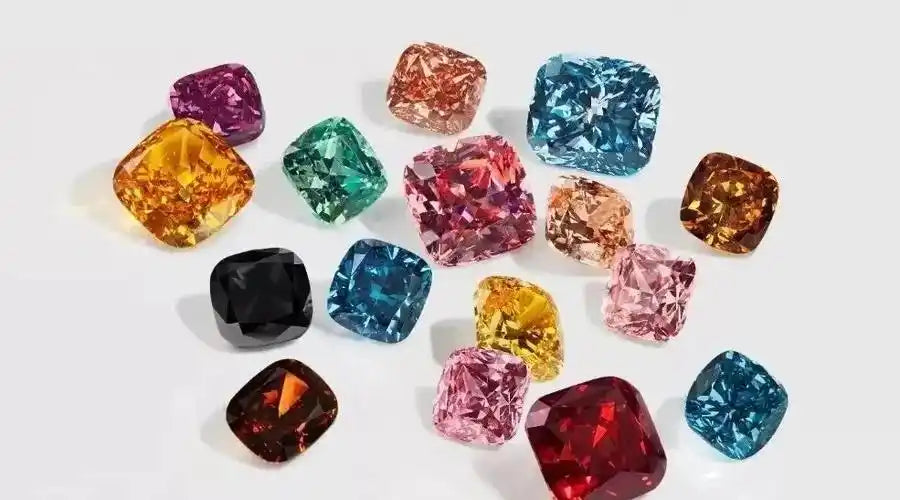
In an era where climate consciousness and ethical consumerism are shaping purchasing decisions, the jewelry industry is undergoing a transformative shift. As consumers increasingly seek products that align with their values, synthetic gems (also known as lab-grown or laboratory-created gems) have emerged as a groundbreaking solution. These gems aren’t just a stylish alternative—they’re a sustainable revolution. In this blog, we’ll explore how synthetic gems reduce environmental impact, outperform traditional mined stones in ethical and ecological terms, and why they’re pivotal to a more sustainable future for the jewelry industry.
The Environmental Toll of Traditional Gemstone Mining
Natural gemstones, while breathtaking, come with a hidden cost: conventional mining practices are some of the most destructive to our planet.
-
Habitat Destruction & Ecosystem Damage
Mining operations—especially in regions like Africa, South America, and Southeast Asia—displace wildlife, erode soil, and destroy forests. Open-pit mining and hydraulic fracturing (used to extract gems like diamonds, rubies, and sapphires) disrupt delicate ecosystems, leading to long-term biodiversity loss. -
Water & Energy Waste
Traditional mining requires vast amounts of water (up to 500,000 gallons per carat for diamond extraction in some regions) and relies heavily on fossil fuels for machinery, contributing to greenhouse gas emissions and water pollution from chemical runoff. -
Social & Ethical Concerns
Artisanal mines often lack labor protections, and even “conflict-free” labels can’t fully address the environmental displacement or human rights issues tied to mining communities.

How Synthetic Gems Revolutionize Sustainability
Synthetic gems are created in controlled laboratory environments using technologies like Chemical Vapor Deposition (CVD) or High-Pressure High-Temperature (HPHT) processes. Here’s why their production is a game-changer for the planet:
1. Drastically Reduced Carbon Footprint
Lab-grown gem facilities are designed for energy efficiency. Modern labs use renewable energy sources (solar, wind) and recycle heat byproducts, cutting carbon emissions by up to 80% compared to mining. For example, a lab-grown diamond generates just 1-3 kg of CO₂ per carat, versus 50-100 kg for mined diamonds.
2. Minimal Water & Resource Use
Synthetic gem production requires 90% less water than mining and eliminates the need for harsh chemicals like cyanide or mercury. Labs reuse water and manage waste strictly, leaving no toxic residue in ecosystems.
3. Zero Land Degradation
No digging, blasting,or deforestation is involved. Lab-grown gems grow from tiny seed crystals in controlled chambers, preserving natural landscapes and protecting vulnerable communities from displacement.
4. Precision & Zero Waste
Mines discard up to 80% of extracted material as “waste rock,” but labs craft gems with near-perfect precision. Raw materials are recycled and reused, aligning with the principles of a circular economy.
Synthetic Gems: Quality Meets Conscience
A common misconception is that synthetic gems are inferior to natural ones. In reality:
- Chemically & Physically Identical: Lab-grown diamonds, sapphires, and rubies share the same atomic structure, hardness, and optical properties as mined gems.
- Purity & Customization: Labs can control growth conditions to create gems with fewer impurities and even tailor colors (e.g., vivid pink diamonds or flawless blue sapphires) without relying on rare natural deposits.
- Traceability: Every synthetic gem has a clear origin—no ambiguity about its mining ethics or environmental impact.
The Role of Synthetic Gems in Sustainable Fashion
Sustainability isn’t just about reducing harm; it’s about building a better system. By choosing synthetic gems, consumers support:
- Ethical Supply Chains: Eliminating the risks of child labor, forced labor, and conflict financing.
- Innovation Over Exploitation: Redirecting industry investment toward eco-friendly technology instead of extractive practices.
- Consumer Empowerment: Access to high-quality, affordable gems that don’t compromise on values.